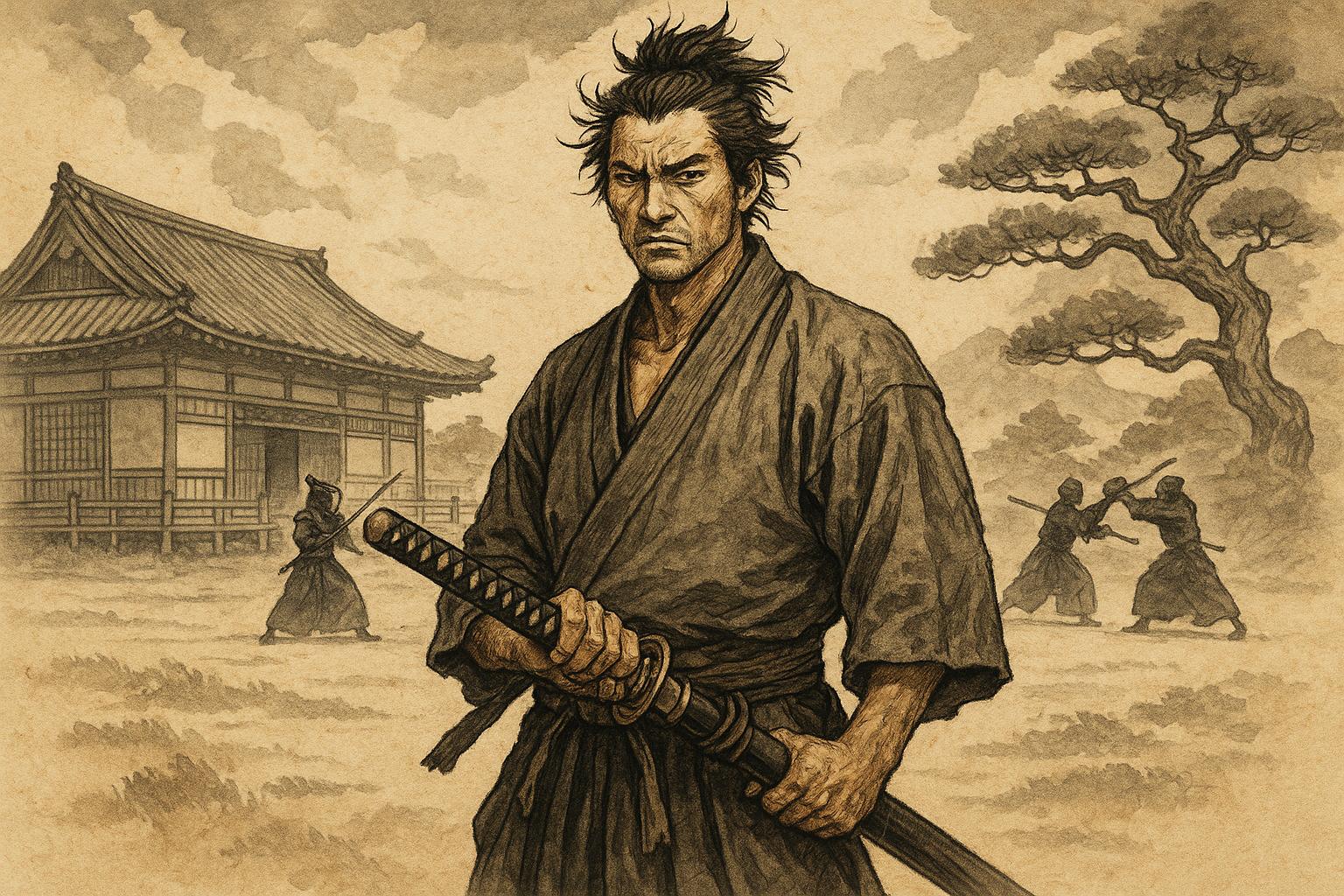The Role of Ronins in Japanese Martial Arts
The term ronin traditionally refers to a samurai without a lord or master during the feudal period of Japan. This often occurred when a samurai’s master was killed or lost power, leaving the samurai without a means of employment. Despite their lack of steady allegiance, ronins played a significant role in shaping various Japanese martial arts.
Origins and Historical Context
The origins of the ronin phenomenon are deeply rooted in the historical context of Japan’s feudal system. During the Edo period, the class structure in Japan was rigidly hierarchical. Samurai, who served the daimyo (feudal lords), were regarded as the warrior class. With the Tokugawa shogunate’s establishment in the early 17th century, Japan entered a long period of relative peace known as the Pax Tokugawa. Without wars to fight, the demand for samurai warriors decreased, leading to an increase in the number of ronins who roamed the countryside and cities of Japan.
Influence on Martial Arts Schools
The rise of ronins led to significant shifts in the landscape of Japanese martial arts. With the instability in employment and the transition to a peaceful society, ronins often gravitated towards either forming or joining martial arts schools. The establishment and growth of martial arts schools during this time was not purely an economic endeavor for these wandering warriors. Teaching martial arts became a way for ronins to maintain and perpetuate their warrior identity, which was traditionally tied to their service to a lord.
Ronins, as unattached warriors, brought unique experiences from different daimyos and regions. This diversity in backgrounds allowed them to enrich martial arts traditions with a blend of various techniques and philosophies. For example, many martial arts schools in Japan were founded during this era, with ronins often taking the lead. The celebrated swordsman Miyamoto Musashi, himself believed to have been a ronin, founded the school of swordsmanship known as Niten Ichi-ryu. His teachings significantly influenced the development of kenjutsu, which has had lasting impacts on modern-day kendo.
Transmission of Martial Knowledge
The nature of a ronin, free from the obligations and loyalties binding a samurai to a daimyo, allowed them to move freely and disseminate martial knowledge across regions. Unlike samurai who were bound by their duties to a specific domain, ronins had the liberty to travel, teach, and learn from different parts of Japan. This mobility facilitated the cross-pollination of martial arts techniques from one area to another, allowing for a broader spectrum of methodologies to evolve within Japanese martial practices. It created a rich tapestry of martial arts that was not limited by regional boundaries or sectarian loyalties.
Ronins and Philosophical Contributions
While the influence of ronins on the physical techniques of martial arts is widely recognized, their contributions to the philosophical landscape of these arts are equally significant. Their personal experiences, often marked by themes of loss and adaptation, drove them to delve deeper into the philosophical underpinnings of martial practice. This exploration often centered on concepts of freedom, loyalty, bravery, and personal mastery, which became integral to the spiritual and ethical dimensions of many martial arts.
A prime example of these philosophical contributions is evident in the work of Miyamoto Musashi. His treatise, The Book of Five Rings, extends beyond simple martial strategy and execution; it explores deeper philosophical themes that continue to inform martial arts philosophies. Musashi’s writings offer insights into how ronins viewed concepts such as adaptability and strategic thinking, not just in combat, but as broader life principles.
Economic and Social Impacts
The roles of ronins extended beyond just shaping martial arts; they also influenced the socio-economic framework within which these arts were practiced. As ronins were no longer supported by a steady patronage system, they had to find new means to sustain themselves. Many took on roles as bodyguards, instructors for the wealthy, or even enforcers for local shoguns and merchants. This necessity for broader means of employment often blurred the lines between strict martial arts practice and its practical application in everyday society.
As a result, martial arts, once seen primarily as techniques of war, began to integrate in society in new ways. The ronins’ need for economic survival led to a democratization of martial knowledge, making it accessible to a wider audience beyond the elite class. This shift also began to lay the groundwork for martial arts to evolve from being solely militaristic techniques to becoming a way of life, embodying spiritual, philosophical, and societal elements.
Conclusion
In summary, the impact of ronins on Japanese martial arts is profound and multifaceted. They shaped the development and dissemination of martial techniques, introduced diverse philosophies, and influenced the arts’ socio-economic context. The legacy of ronins persists in the roots of modern martial practices, where their contributions can still be discerned.
For those with an interest in exploring the evolution of Japanese martial arts and the role of ronins, there are numerous avenues available. Delving into historical treatises, like Musashi’s The Book of Five Rings, or visiting cultural heritage sites associated with these rich martial traditions offer valuable insights. The story of ronins is not just a tale of disenfranchised warriors; it is a testament to adaptability, resilience, and the evolution of martial arts as both a practice and a cultural heritage.

